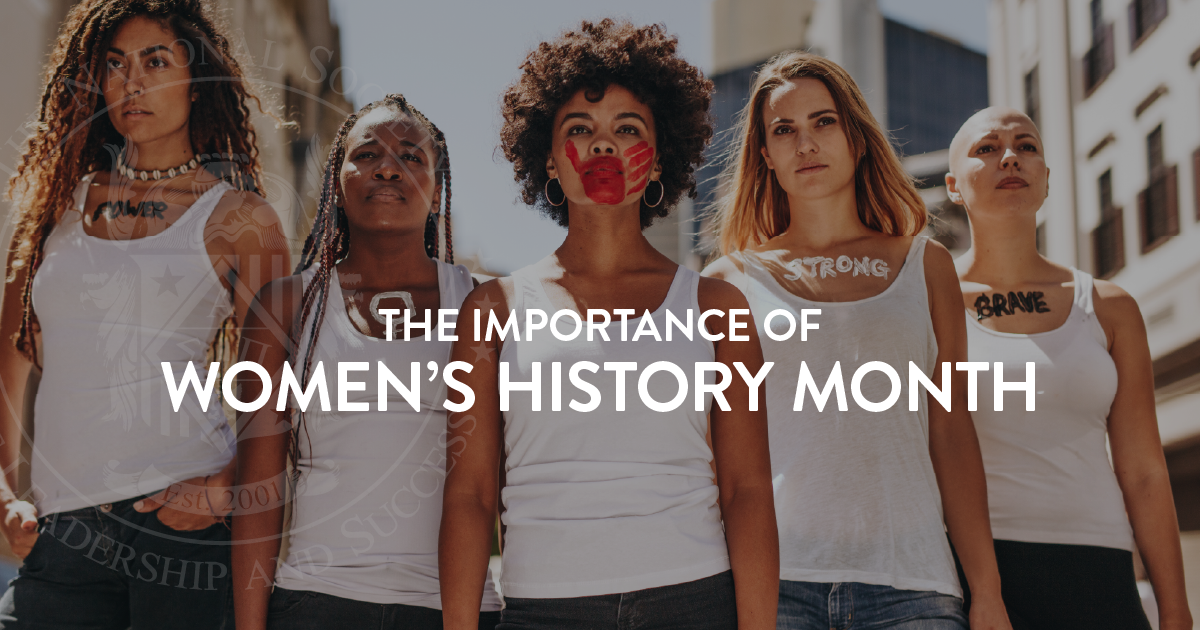By Annie Sisk
The late Justice Ruth Bader Ginsburg said: “I'm sometimes asked ‘When will there be enough women on the Supreme Court?’ And I say, when there are nine. People are shocked. But there'd been nine men, and nobody's ever raised a question about that.”
Ask ten different people why we recognize Women’s History Month, and you’ll probably get ten different responses. Yet, they tend to distill down to one common theme: too many people are still taken aback by the prospect of women in leadership.
We’ve definitely come a long way. Even as recently as a few generations ago, US women weren’t permitted to open credit in their name without their husbands’ approval. And 103 years ago, white women were given the right to vote, a right not cemented for women of color until the Voting Rights Act of 1965.
In light of this, there’s still a long way to go. As UN Secretary General António Guterres very recently stated, "Progress toward gender equality is vanishing before our eyes. Women’s rights are being abused, threatened, and violated around the world." He also said at this rate, true equality won't be achieved for another 300 years.
That essential truth is reflected in a myriad of ways in daily professional, political, and social life for modern women. These are just some of the reasons why we recognize Women’s History Month.
1. Women Still Get Blamed for Men’s Unhappiness
This Instagram post from The Hill is accompanied by a caption that reads in part: “Scholars say the new era of gender parity has reshaped relationship dynamics, empowering young women and, in many cases, removing young men from the equation.”
Jennifer Reitman, founder and publisher of DAME magazine points out in an email message, the post’s carousel of images trumpets statistics designed to sound the alarms:
-
Over 60% of young men remain single — almost twice as many single young women, which “signals a larger breakdown in the social, romantic, and sexual life of the American male.”
-
About half of single men are consciously in search of relationships or dating partners.
-
20-something young men are more likely than women their age to be “romantically uninvolved, sexually dormant, friendless, and lonely.”
-
This “social disconnect” sometimes leads to “tragic consequences” — specifically, mass shootings.
The framing of this content isn’t advocating for better mental health care or attention to loneliness but rather, seems to blame young women for young men’s dissatisfaction and even criminal behavior.
The Hill’s post and associated content raise important questions that should be addressed by society, but positioning this as a poor outcome for men that’s caused by women asserting their rights and independence is unfair to everyone.
Celebrating Women’s History Month won’t solve this problem, but it does present an ideal opportunity to start the conversation and raise awareness.
2. Women Are Still Given Short Stick in History
Chances are, you can identify the major contributions to history, politics, science, entertainment and education made by James Watson, Francis Crick, Winston Churchill, Mahatma Gandhi, and Nelson Mandela.
Can you say the same of Rosalind Franklin, Ada Lovelace, Faith Spotted Eagle and Patsy Mink? Do you know why Hedy Lamarr is so important to modern technology? Have you ever heard of Bessie Coleman? Or any of the women mentioned in the video below?
Throughout history, women have made positive and influential changes that made life better for millions but they often go unrecognized. The result is that we’re getting only about half of the story behind our societies, cultures, and histories. Women’s History Month helps us learn the rest.
3. Women Still Make MUCH Less Than Male Colleagues
Gender pay equity seems like such a simple concept: if two people are doing the same job, they shouldn’t be paid different salaries simply because one is a woman and the other is a man.
In 2021, women earned on average 82 cents for every dollar that men earned. That pay gap was even greater for women managers, who earned 77 cents on the dollar compared to male managers. For Black and Latino women, the gaps are even greater: 63 cents and 58 cents for every dollar earned by a white male, respectively.
Paying women less than men who are performing the same job functions sends a loud message that women employees simply aren’t valued as highly as their male colleagues. That’s not right, nor should it be tolerated.
It’s to everyone’s benefit to ensure equal pay for equal work, because a rising tide lifts all boats.
Far too many people aren’t even aware that pay equity is a very real issue today. This month — and every month — is a perfect time to advocate for parity and raise these issues with managers and colleagues.
Advocating for Women
At the NSLS, we want to recognize and celebrate the many achievements made by women throughout history, as well as their ongoing fight against stereotypes and discrimination of all kinds.
For suggestions on how you can honor the contributions of women, explore some resources on the government’s Women’s History Month website and ADP’s list of workplace suggestions.









